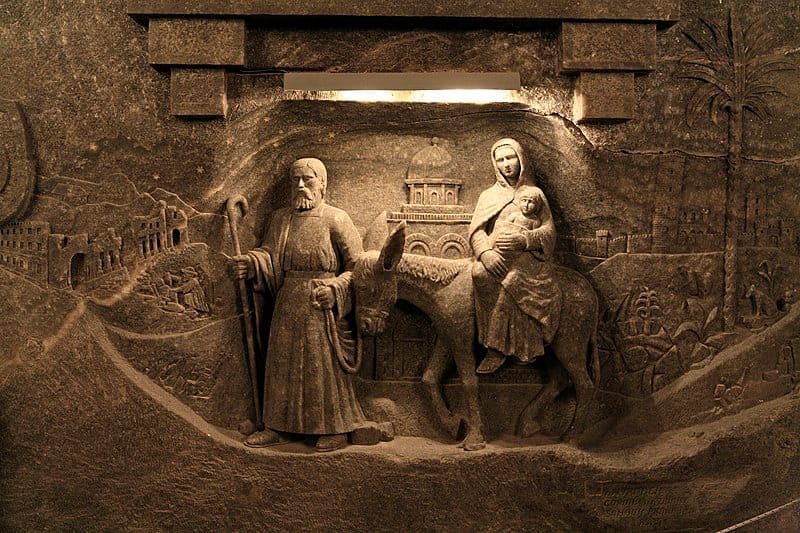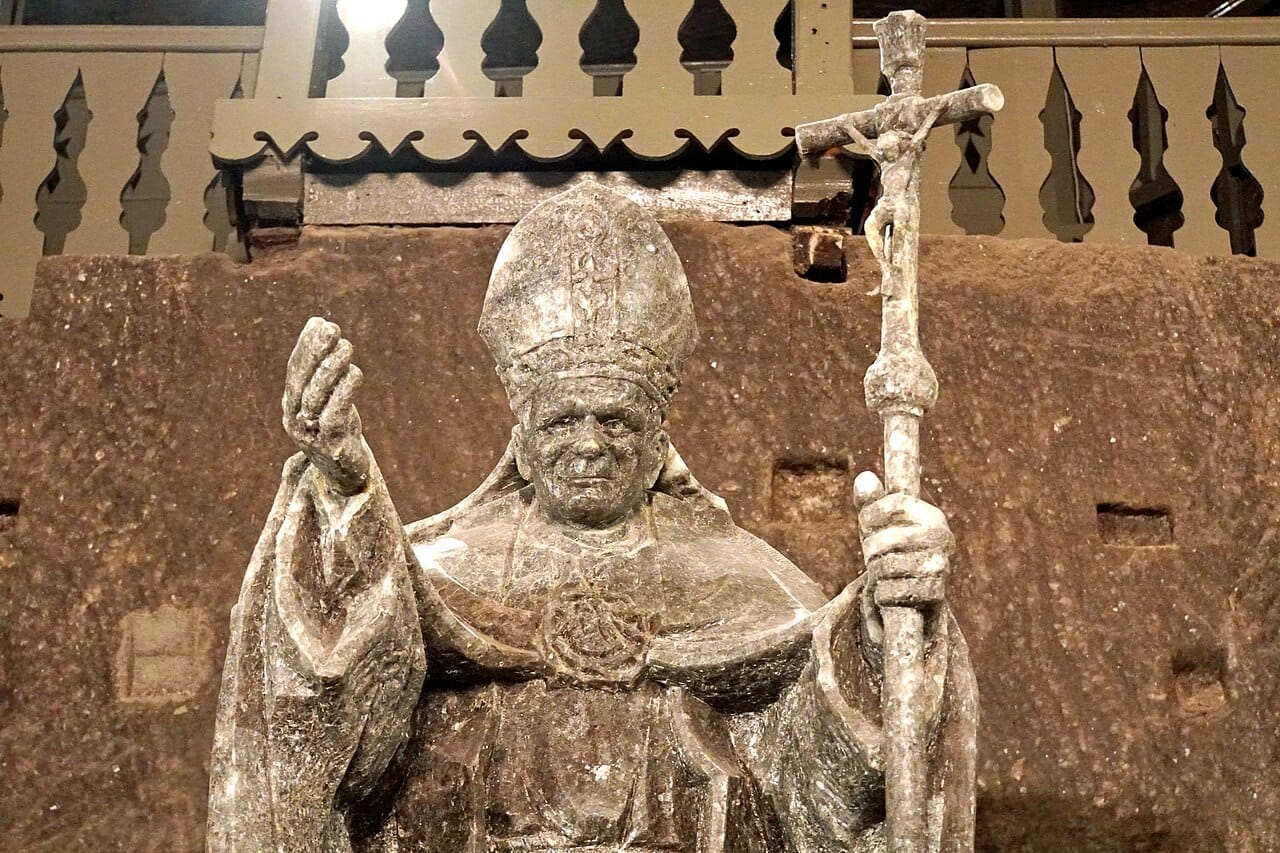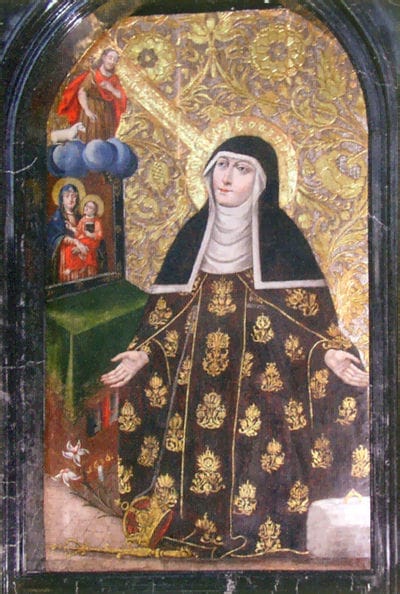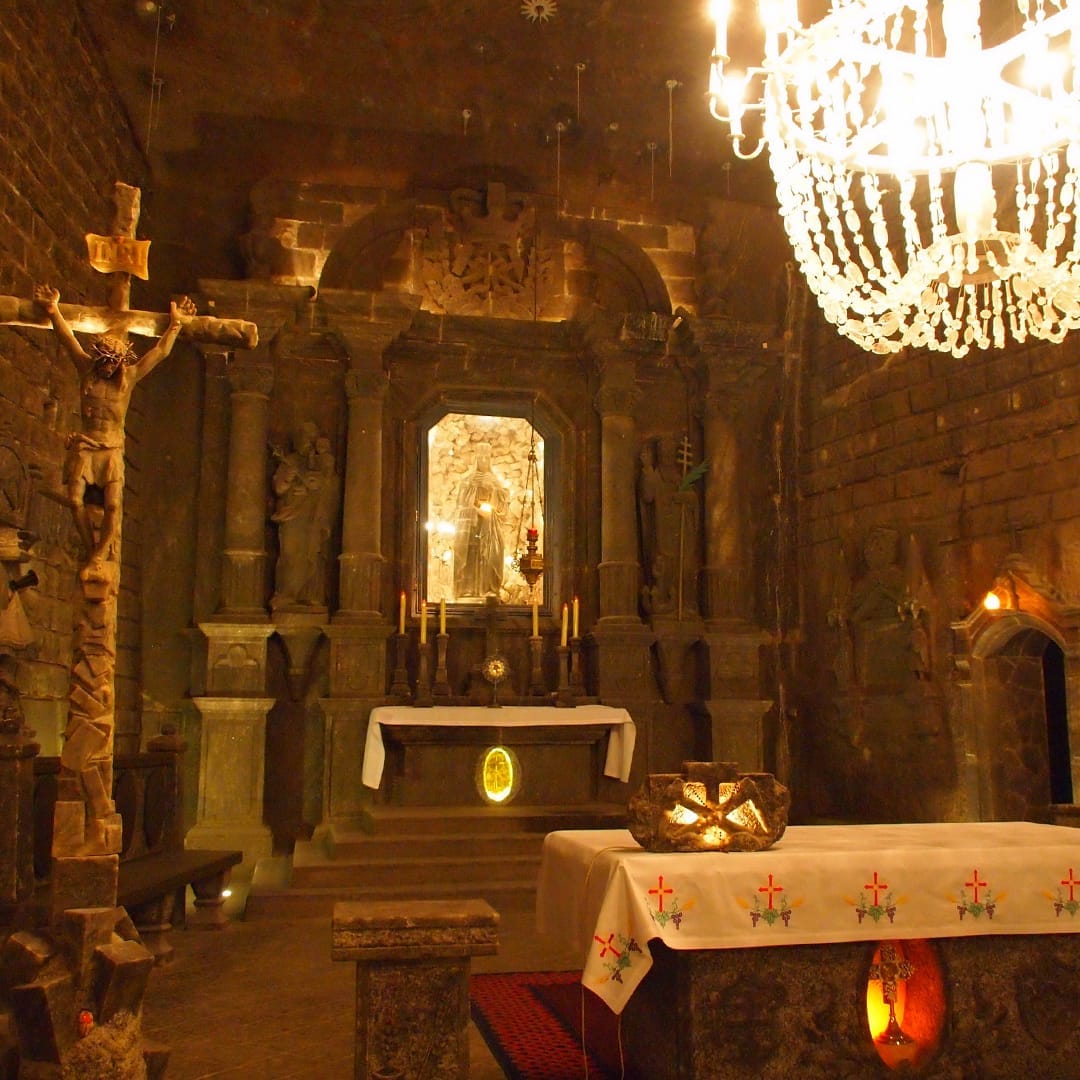More than 300 feet underground in the Wieliczka Mines in Poland lies the Chapel of St. Kinga, the largest underground church in the world.
This amazing construction made entirely of salt welcomes visitors from all over the world.
Officially opened in the 13th century, the Wieliczka Mines in Krakow reach a depth of over 1,000 feet. The underground network comprises over 150 miles of galleries, spread over nine levels. This labyrinth of salt is so large that only two percent of its dimensions can be explored.
Visitors to this World Heritage Site can see the chapels carved into the salt rock, which allowed miners to practice their faith while working.
Catholic News Agency says:
"Since miners typically worked under dangerous circumstances in the dark, away from their families, they created the chapels as places where they could pray and celebrate Mass before facing the challenges of the job."
Saint Kinga's Chapel
The most important church in this mine is the Chapel of Saint Kinga, a church located 331 feet underground.
This 40-foot-high temple is decorated with bas-relief images of scenes from Jesus' life, such as the Wedding at Cana, the Nativity, and the Last Supper, which took more than 70 years to carve.

“The floor was carved from a homogeneous block of salt and the ceiling is decorated with exquisitely crafted salt chandeliers,” the mine’s website states.
The altar made by Józef Markowski is decorated with statues of Saint Kinga, Saint Joseph, and Saint Clement. It also houses the saint's relics.
“In the presbytery you can see a papal crucifix symbolizing the four salt mines located in Poland: Wieliczka, Bochnia, Kłodawa and Sieroszowice.”

For the canonization of Saint Kinga in 1999, a statue was created in honor of Saint John Paul II, which is the only salt statue of the Polish pope in the world.
Who was Saint Kinga?
Kinga was the daughter of the King of Hungary, Bela IV, and the daughter of the Emperor of Byzantium, Maria. At just five years old, she was taken to Poland to meet the 13-year-old Prince of Sandomierz, Boleslaus the Chaste, whom she would marry.
Eight years later, in 1247, the marriage was celebrated as a strategic union to strengthen the alliance between both countries, in the face of the threat of a Tatar invasion.
“In fact, the Tartars invaded the country but were expelled. After these events, the royal couple took a vow of lifelong chastity, witnessed by Bishop Prandota. According to the customs of the time, it was intended as a votive offering in thanksgiving for divine protection and liberation. However, as hagiographers point out, it was also a confirmation of the life that Kinga had led until then,” notes L'osservatore Romano.

Throughout her marriage, the saint demonstrated exemplary loyalty, care, and prudence. She also devoted much of her time to visiting the poor and caring for lepers.
“On several occasions, Boleslaus mentioned in official documents that he had made a decision following his wife’s advice. Such expressions of deference and respect, far from being usual, attest to the quality of the couple’s relationship.”
Upon her husband's death in 1279, Kinga sold all her material possessions, gave the money to the poor, and entered the monastery of the Poor Clares in Stary Sącz in Poland, where she dedicated her life to prayer.
She died in 1292, was beatified by Pope Alexander VIII in 1690, and was canonized by Saint John Paul II on June 16, 1999.


